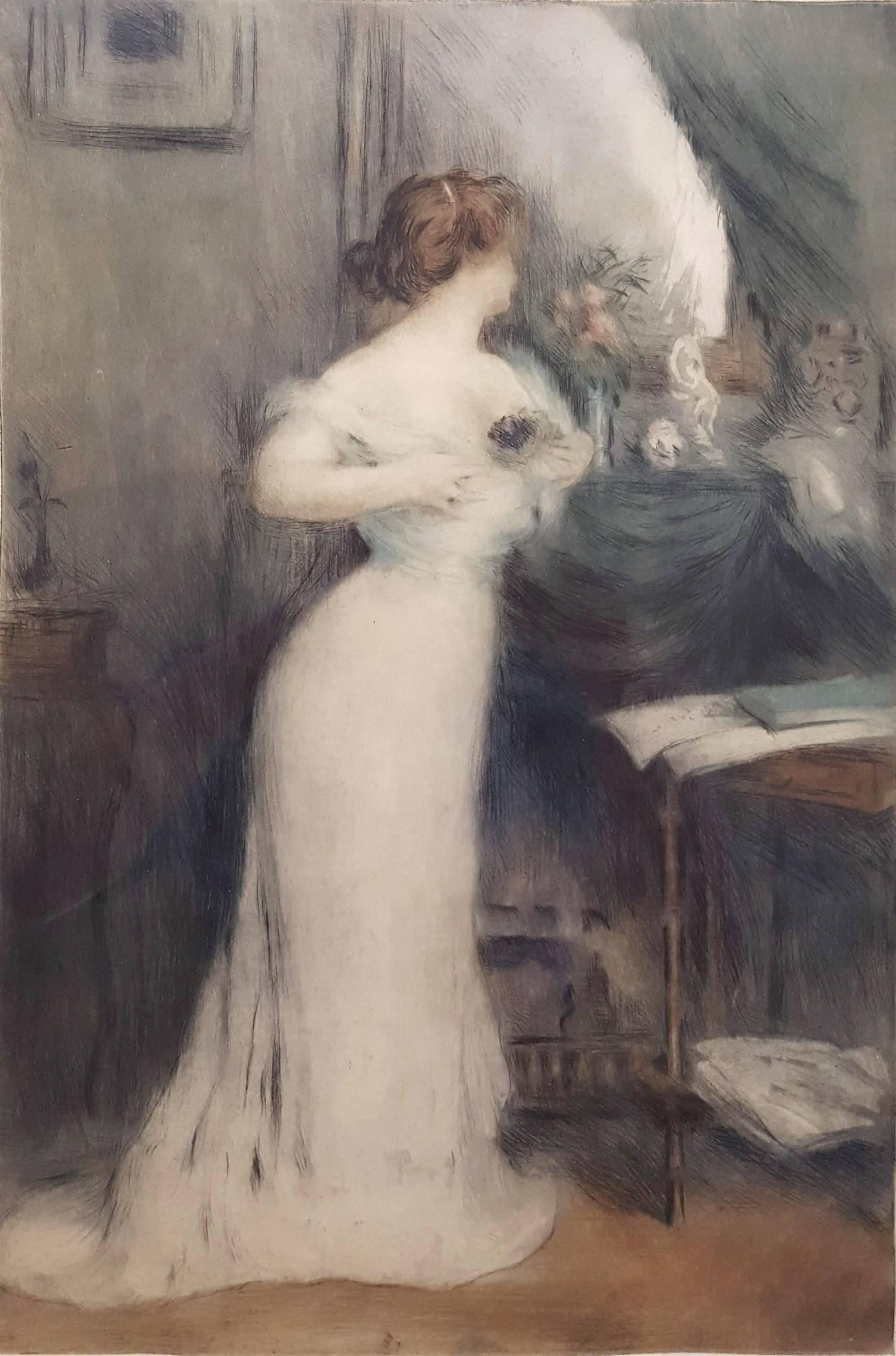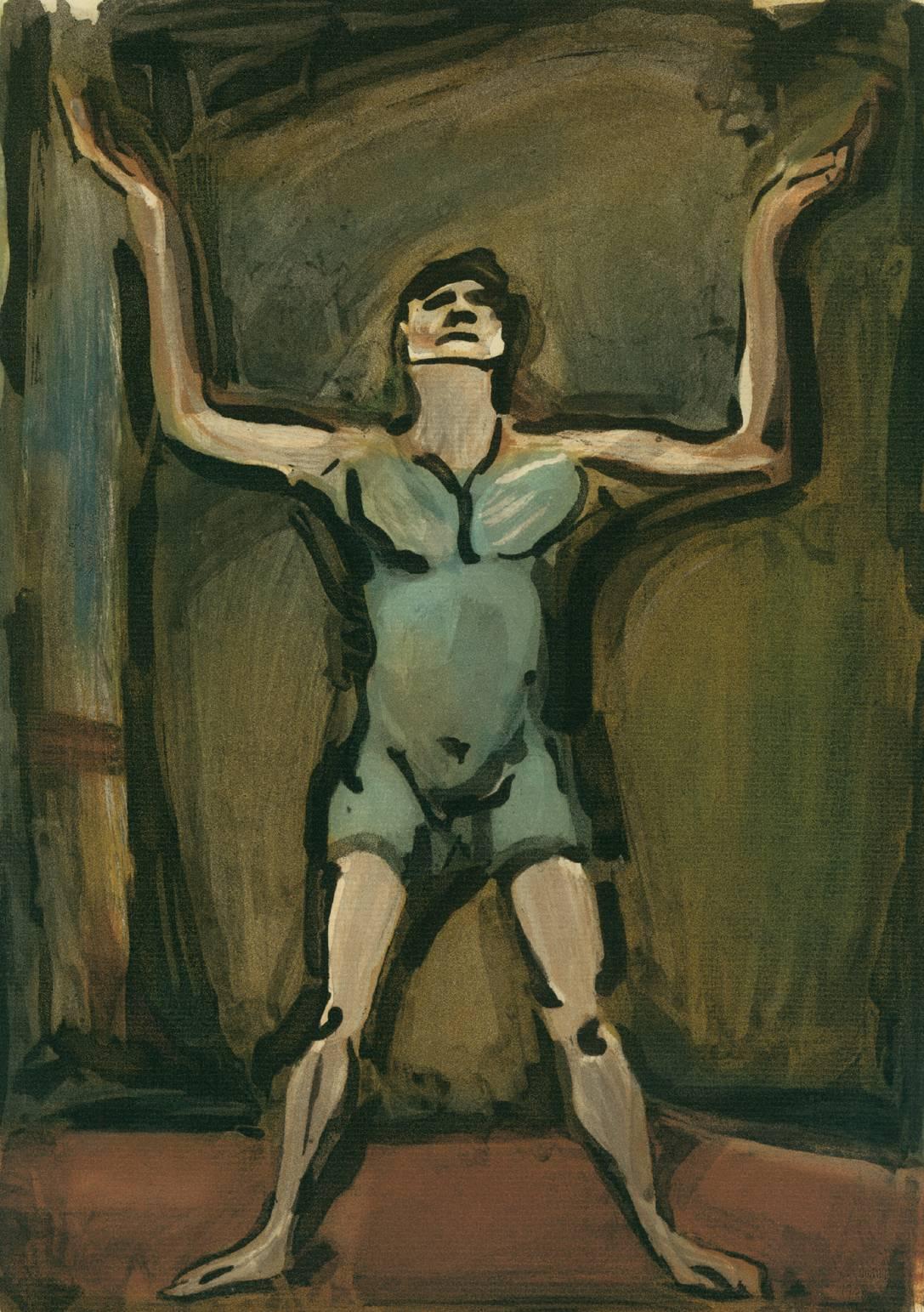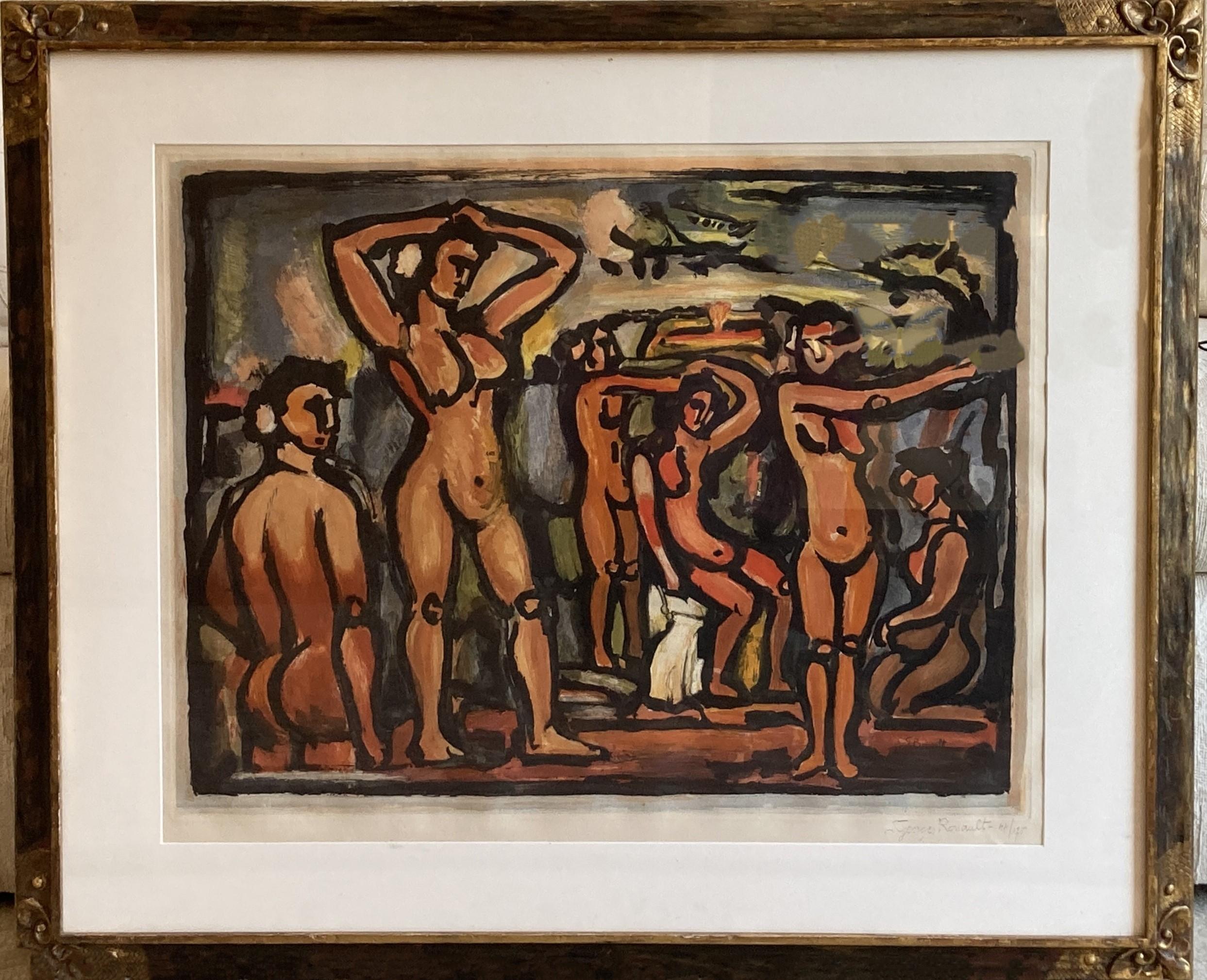Camille PissarroMarche aux Legumes a Pontoise1891 (1923)
1891 (1923)
About the Item
- Creator:Camille Pissarro (1831-1903, French)
- Creation Year:1891 (1923)
- Dimensions:Height: 10 in (25.4 cm)Width: 8 in (20.32 cm)
- Medium:
- Movement & Style:
- Period:
- Condition:
- Gallery Location:Santa Monica, CA
- Reference Number:1stDibs: LU41137802732
Camille Pissarro
Camille Pissarro was one of the most influential members of the French Impressionist movement and the only artist to participate in all eight Impressionist exhibitions.
Born in July of 1830 on the island of Saint Thomas in the Danish West Indies, Camille was the son of Frédéric and Rachel Pissarro. At the age of 12, he went to school in Paris, where he displayed a penchant for drawing. He returned again to Paris in 1855, having convinced his parents to allow him to pursue a career as an artist rather than work in the family import/export business. Camille studied at the Académie Suisse alongside Claude Monet, and, during this time, he met Paul Cézanne, Édouard Manet and Pierre-Auguste Renoir.
In 1869, Camille settled in Louveciennes. The outbreak of the Franco-Prussian War in 1870 prompted him to move to England, and, with Monet, Camille painted a series of landscapes around Norwood and Crystal Palace, while studying English landscape painting in the museums. Upon returning a year later at the end of the War to Louveciennes, Camille discovered that only 40 of his 1,500 paintings — almost 20 years’ work — remained undamaged.
Camille settled in Pontoise in the summer of 1871, remaining there and gathering a close circle of friends around him for the next 10 years. He reestablished relationships with Cézanne, Manet, Monet, Renoir and Edgar Degas, expressing his desire to create an alternative to the Salon, so that their group could display their own unique styles. Camille married Julie Vellay, with whom he would have seven children. Cézanne repeatedly came to stay with them, and, under Camille’s influence, he learned to study nature more patiently, even copying one of Camille’s landscapes in order to learn his teacher’s technique.
The first Impressionist group exhibition, initiated by Monet in 1874, earned the Impressionists much criticism for their art. While mainly interested in landscape, Camille introduced people — generally, peasants going about their rural occupations — and animals into his works, and they often became the focal point of the composition. It was this unsentimental and realistic approach, with the complete absence of any pretense, which seemed to stop his work from finding appreciation in the general public.
One of the few collectors who did show interest in Camille’s work was a bank employee named Paul Gauguin, who, after acquiring a small collection of Impressionist works, turned to Camille for advice on becoming a painter himself. For several years, Gauguin closely followed his mentor, and, although their friendship was fraught with disagreement and misunderstandings, Gauguin still wrote shortly before Camille’s death in 1906: “He was one of my masters, and I do not deny him.”
In the 1880s, Camille moved from Pontoise to nearby Osny, before Eragny, a small village much further from Paris. At a time when he was dissatisfied with his work, in 1885, Camille met both Paul Signac and Georges Seurat. He was fascinated by their efforts to replace the intuitive perceptive approach of the Impressionists with a “Divisionist” method, or scientific study of nature’s phenomena based on optical laws. Despite having reached his mid-50s, Camille did not hesitate to follow the two young innovators. The following year, he passed on this new concept to Vincent Van Gogh, who had just arrived in Paris and was keen to learn of the most recent developments in art. However, after a few years, Camille felt restricted by Seurat’s theories and returned to his more spontaneous technique while retaining the lightness and purity of color acquired during his Divisionist phase.
In the last years of his life, Camille divided his time between Paris, Rouen, Le Havre and Eragny, painting several series of different aspects of these cities, with varying light and weather effects. Many of these paintings are considered among his best and make for an apt finale to his long and prodigious career.
When Camille Pissarro died in the autumn of 1903, he had finally started to gain public recognition. Today his work can be found in many of the most important museums and collections throughout the world.
Find original Camille Pissarro art on 1stDibs.
(Biography provided by Stern Pissarro Gallery)
- ShippingRetrieving quote...Ships From: Santa Monica, CA
- Return PolicyA return for this item may be initiated within 7 days of delivery.
- CHANGING FLIESBy Levon WestLocated in Santa Monica, CALEVON WEST (1900 – 1968) CHANGING FLIES c. 1930 Etching and drypoint, signed in pencil and no. 28. Image, 13 1/8 x 8 3/8 inches, sheet 17 1/4 x 11 5/8 full margins with deckle edge...Category
1930s Impressionist Figurative Prints
MaterialsEtching
- Baigneuse debout à mi-jambesBy Pierre Auguste RenoirLocated in Santa Monica, CAPIERRE-AUGUSTE RENOIR (French, 1841 - 1919) BAIGNEUSE DEBOUT A MI JAMBES (D., S. 23) Etching, 1910, a later impression on laid paper, the only state. Full margins with deckle edge...Category
1910s Impressionist Figurative Prints
MaterialsEtching
- Vachère au Bord de l'EauBy Camille PissarroLocated in Santa Monica, CACAMILLE PISSARRO (French 1830-1903) VACHERE au BORD de l’EAU 1890 (Delteil 93 viii/viii) Etching, unsigned as published in “Gazette des Beaux Arts”, Paris, 1890. On laid paper Very...Category
1890s Impressionist Figurative Prints
MaterialsEtching, Drypoint
- OBSEQUIO á el MAESTRO (‘A gift for the master’)By Francisco GoyaLocated in Santa Monica, CAFRANCISCO de GOYA y LUCIENTES (1746 -1828) OBSEQUIO á el MAESTRO (‘A gift for the master’) Plate 47 from the 1st edition of Los Caprichos (Blas, ...Category
1790s Old Masters Figurative Prints
MaterialsEtching, Aquatint
- LA SORCIERE - (The Witch)By Kurt SeligmannLocated in Santa Monica, CAKURT SELIGMANN (1900–1962 American, born in Switzerland,) LA SORCIERE - (The Witch) 1934 Etching and aquatint, unsigned ? possibly a proof aside from The ...Category
1930s Surrealist Figurative Prints
MaterialsEtching, Aquatint
- 1001 Nights - SURREALIST WOMAN DEAD IN A TREASURE BOXLocated in Santa Monica, CARICHARD TESCHNER (Prague 1879 – 1948) From: A Thousand and One Nights - SURREALIST WOMAN DEAD IN A TREASURE BOX, 1917 Aquatint, Proof no. 17. Aqua...Category
1910s Symbolist Figurative Prints
MaterialsAquatint
- Le Bouquet de Violettes (The Bouquet of Violets) /// Figurative ImpressionistBy Manuel RobbeLocated in Saint Augustine, FLArtist: Manuel Robbe (French, 1872-1936) Title: "Le Bouquet de Violettes (The Bouquet of Violets)" *Signed by Robbe in pencil lower right Year: 1903 Medium: Original Hand-Colored Etc...Category
Early 1900s Impressionist Figurative Prints
MaterialsEtching, Aquatint, Watercolor, Laid Paper, Intaglio
- Le Jongleur (The Minstrel)By Georges RouaultLocated in Storrs, CTLe Jongleur (The Minstrel). 1930. Etching and aquatint printed in colours. Chapon/Rouault 199 d. 12 1/4 x 8 1/2 (sheet 17 1/4 x 13 1/8). Series: Cirque plate 2. Edition 270. Initial...Category
Early 20th Century Impressionist Figurative Prints
MaterialsColor, Aquatint
- Automne (Autumn)By Georges RouaultLocated in Storrs, CTAutomne (Autumn). 1938. Aquatint print in colors. Chapon/Rouault 288C. 19 1/2 x 25 1/2 ( sheet 22 5/8 x 30 3/4). Edition 175, #44 Published by Vollard. A rich impression with bright...Category
Mid-20th Century Impressionist Figurative Prints
MaterialsAquatint, Color
- Sea Maidens (or, Sunshine; Girls on the Beach)By Arthur B. DaviesLocated in New York, NYArthur B. Davies (1862-1928), Sea Maidens (or, Sunshine; Girls on the Beach), soft ground etching and aquatint, 1919, signed in pencil lower right. Reference: Czestochoski 79, second...Category
1910s American Impressionist Figurative Prints
MaterialsEtching, Aquatint
- La Parisienne (tournee a gauche, petite planche)By Jacques VillonLocated in New York, NYJacques Villon (1875-1963), La Parisienne (tournee a gauche, petite planche), 1904, etching and aquatint in color (black, brown, red), signed and dated...Category
Early 1900s Impressionist Figurative Prints
MaterialsEtching, Aquatint
- Pour le Bapteme de MadeleineBy Jacques VillonLocated in New York, NYJacques Villon (1875-1963), Pour le Bapteme de Madeleine, 1900, aquatint , etching, printed in soft blue ink, signed in pencil lower right and numbered 7/10. On laid paper. Reference...Category
Early 1900s Impressionist Figurative Prints
MaterialsEtching, Aquatint



